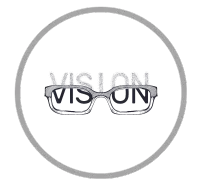Myopia Metrics
Axial Length vs Prescription: Two Vital Metrics
FSDAVCFEBFEVSDDVFSD
FSDAVCFEBFEVSDDVFSD
FSDAVCFEBFEVSDDVFSD
Why High Myopia Needs Watchful Care
Prescriptions written in diopters describe how much focusing power a lens needs to help your child see clearly right now. In contrast, axial length—measured in millimeters—reveals how long the eye has grown, a key factor in long-term myopia risk. The two metrics move differently; a child’s prescription might change while axial growth slows, or the opposite.
Eye doctors at Kleinwood Vision track both to monitor myopia progression trends and make accurate, data-based adjustments. Families should expect to see both numbers during visits, helping clarify where the child stands against age-appropriate axial length targets. Understanding both scales allows care to be guided by evidence, not estimation.
Prescriptions written in diopters describe how much focusing power a lens needs to help your child see clearly right now. In contrast, axial length—measured in millimeters—reveals how long the eye has grown, a key factor in long-term myopia risk. The two metrics move differently; a child’s prescription might change while axial growth slows, or the opposite.
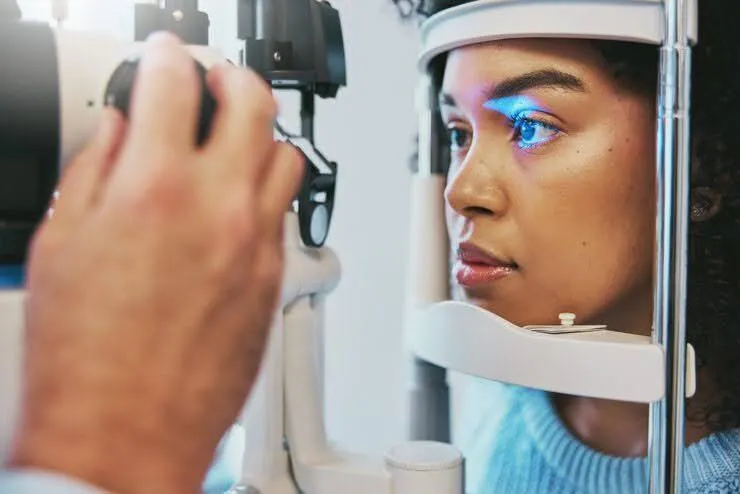
Eye doctors at Kleinwood Vision track both to monitor myopia progression trends and make accurate, data-based adjustments. Families should expect to see both numbers during visits, helping clarify where the child stands against age-appropriate axial length targets. Understanding both scales allows care to be guided by evidence, not estimation.

Tracking Progress the Smart Way
Precise myopia monitoring metrics rely heavily on consistency, ensuring accurate evaluation over time. Clinics use the same optical biometry tracking tools at similar times of day to reduce natural daily fluctuations. Optical biometers provide highly repeatable millimeter readings, while refraction tests measure how clearly a child focuses through lenses. Each testing method contributes unique data, offering a clearer view of treatment success and overall eye health.
Rather than focusing on a single measurement, specialists examine long-term patterns. They analyze trend lines over several months to track mm/year growth and determine if treatments such as Ortho-K or atropine remain effective. External factors like seasonal changes, increased schoolwork, or growth spurts may cause temporary shifts in results, which is why every reading is interpreted within a broader context to avoid misleading conclusions.
Parents also play a vital role by tracking daily habits such as outdoor time, near-work duration, and screen exposure between clinic visits. These lifestyle records help the Houston myopia specialist understand subtle fluctuations in measurement outcomes. By combining clinical precision with parental involvement, a collaborative and realistic monitoring plan is created, ensuring the most effective guidance for every child’s visual development.
Turning Myopia Data Into Decisions
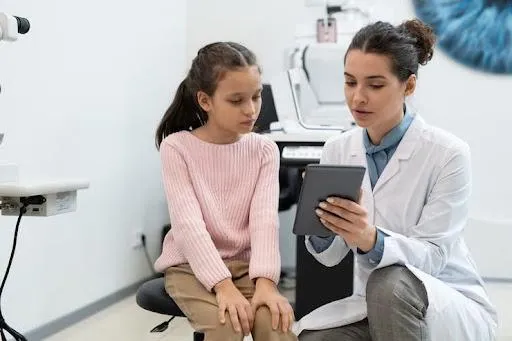
If growth remains within axial length targets, treatment can continue with slightly wider intervals between follow-ups, allowing steady monitoring without unnecessary visits. However, if mm/year readings begin to rise, clinicians may take proactive steps such as fine-tuning the Ortho-K fit, reassessing MiSight® lens effectiveness, or modifying atropine dosage to regain better control over progression. In cases of persistent acceleration, a carefully planned combination therapy may be introduced to ensure safer and more stable results over time, protecting visual health.

By establishing clear change thresholds in advance, families and specialists maintain calm, data-driven decision-making throughout the process. Each adjustment is evaluated at the next visit to confirm effectiveness and track improvement accurately. This structured, collaborative approach ensures every modification is purposeful, helping protect long-term vision while keeping parents confident, informed, and fully engaged in their child’s ongoing myopia management journey.
Re-measurements are recommended after illness, increased screen-time, or any extended disruptions in routine, as these factors can temporarily affect visual stability. Bringing habit trackers, current lenses, and daily activity logs to Kleinwood Vision enables the care team to pinpoint any external influences impacting progress. These detailed records allow specialists to refine treatment, ensuring that interventions like Ortho-K, MiSight®, or atropine continue to align with each child’s evolving needs. Consistent follow-up and accurate tracking support more precise decisions over time.
It’s important to recognize that diopters vs millimeters do not always change at the same rate. While prescriptions may show small fluctuations, maintaining a stable axial length is the strongest predictor of long-term success. A flatter axial growth curve signals effective control—even if glasses or contact lens prescriptions still adjust slightly. Understanding this distinction helps families remain positive, patient, and proactive throughout their child’s myopia care journey, focusing on meaningful progress rather than temporary prescription shifts.
Explaining Results to Your Child
Simple visual tools, such as color-coded charts with green, yellow, and red zones, help children clearly understand that slower eye growth signals success. Presenting myopia progression in this visual format makes complex data like diopters vs millimeters less intimidating and encourages consistency with daily habits. When kids can see their progress, they become more motivated to follow routines that support healthy vision.
Celebrating small victories—like spending extra time outdoors, taking near-work breaks, and maintaining a good sleep schedule—builds positive momentum. Involving children in weekly goals helps them take ownership of their eye care and reduces anxiety around exams. Progress becomes something they can actively engage with, not just a clinical discussion. By turning metrics into milestones, families and specialists at Kleinwood Vision create a supportive, confidence-building environment that keeps children committed to long-term myopia control.
Making Metrics Useful at Home
Each week, families should record total outdoor minutes and the longest continuous near-work period. Tracking these details helps connect environmental habits with axial length vs prescription outcomes, offering clearer insight into how daily routines influence myopia progression and treatment effectiveness over time.
Daily, encourage reading at forearm distance, keeping screens at eye level, enlarging text instead of leaning closer, and taking frequent visual breaks. These posture habits and visual hygiene practices play a vital role in supporting long-term treatment success and reducing unnecessary eye strain.
Each week, families should record total outdoor minutes and the longest continuous near-work period. Tracking these details helps connect environmental habits with axial length vs prescription outcomes, offering clearer insight into how daily routines influence myopia progression and treatment effectiveness over time.
Daily, encourage reading at forearm distance, keeping screens at eye level, enlarging text instead of leaning closer, and taking frequent visual breaks. These posture habits and visual hygiene practices play a vital role in supporting long-term treatment success and reducing unnecessary eye strain.

Once a month, review logs together and write down any questions or concerns. Bringing this preparation to each visit ensures clear discussions and confident decisions when meeting your Houston myopia specialist, strengthening communication and proactive care.

Once a month, review logs together and write down any questions or concerns. Bringing this preparation to each visit ensures clear discussions and confident decisions when meeting your Houston myopia specialist, strengthening communication and proactive care.
Combination Therapy and Follow-Up Windows
When myopia control slows or growth spikes unexpectedly, combining treatments—such as Ortho-K lenses with low-dose atropine—can help restore progress toward ideal axial length targets kids need for long-term stability. During these phases, the clinic may temporarily shorten follow-up intervals to closely observe changes and ensure that readings return to the expected trend. This proactive adjustment helps prevent small setbacks from turning into long-term regressions, reinforcing data-driven care.
Comfort is always addressed first to maintain high adherence. If dryness, irritation, or lens handling challenges occur, your provider will focus on resolving these issues before making any major therapeutic changes. Coaching on insertion techniques, cleaning routines, and proper wear schedules ensures that children can confidently manage their lenses at home, supporting consistent treatment performance without unnecessary stress.
Every modification includes a clearly written goal—such as reducing growth by a specific mm/year—along with a scheduled checkpoint visit to verify progress. If two consecutive measurements meet targets, follow-up visits may be gradually spaced out again. If not, the next evidence-based step is calmly implemented, whether it involves refining Ortho-K, adjusting atropine strength, or integrating additional strategies. This structured approach ensures that each change is purposeful and backed by measurable outcomes.
Clear goals, defined windows, and consistent communication make myopia monitoring metrics both actionable and reassuring for families. By transforming data into a roadmap, parents gain confidence in every phase of their child’s care. For personalized guidance or to schedule your child’s review, please contact us at Kleinwood Vision to ensure their treatment plan continues moving in the right direction.
Parent FAQs About Myopia Metrics
Which number matters more? Both diopters and millimeters are essential. Diopters tell us how clearly your child sees, while axial length in millimeters predicts long-term eye health risks. When tracked together, they offer a full understanding of vision status and progression, helping your doctor make informed treatment decisions.
Can axial length shrink? Minor daily fluctuations can happen, but long-term trends are what count. If axial length stays stable, that’s a strong sign treatment is working.
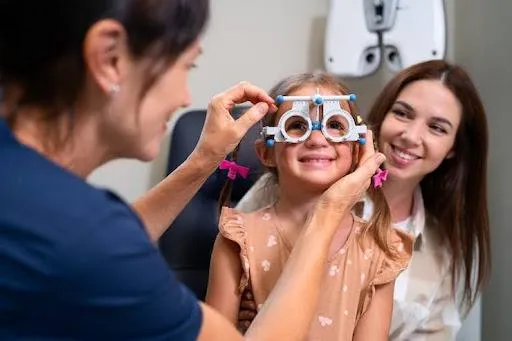
Which number matters more? Both diopters and millimeters are essential. Diopters tell us how clearly your child sees, while axial length in millimeters predicts long-term eye health risks. When tracked together, they offer a full understanding of vision status and progression, helping your doctor make informed treatment decisions.
Can axial length shrink? Minor daily fluctuations can happen, but long-term trends are what count. If axial length stays stable, that’s a strong sign treatment is working. What’s considered “too fast” growth? Each clinic sets age-specific mm/year thresholds. Going beyond these limits suggests it’s time to reassess. Time of day, hydration, and fatigue may cause small measurement shifts.
What’s considered “too fast” growth? Each clinic sets age-specific mm/year thresholds. Going beyond these limits suggests it’s time to reassess. Time of day, hydration, and fatigue may cause small measurement shifts.
Do activity levels matter? Yes—screen-heavy weeks, busy sports seasons, and academic stress can all impact results. Tracking habits helps your Houston myopia specialist read results accurately and adjust the treatment plan for your child’s best outcome.
Do activity levels matter? Yes—screen-heavy weeks, busy sports seasons, and academic stress can all impact results. Tracking habits helps your Houston myopia specialist read results accurately and adjust the treatment plan for your child’s best outcome.
Simple At-Home Myopia Metrics Plan
Post your child’s axial length target and two weekly habits on the refrigerator to create a simple, visible tracking system. Each Sunday, sit together to review progress and make small goal adjustments if necessary. Keep backup glasses within reach and set device timers to remind them of screen breaks, encouraging healthy routines like outdoor time and proper reading posture. These visual prompts help children stay engaged while making positive choices feel natural and effortless.
Treat the numbers as feedback, not judgment. If the curve flattens, stay consistent with current habits; if it begins to steepen, revisit routines and reach out to Kleinwood Vision for early guidance. Proactive communication, steady monitoring, and calm adaptation support smoother myopia progression trends, helping families maintain confidence, clarity, and long-term vision health throughout the treatment journey.

Contact Info
Hours of Operation
Mon - Fri | 9:00 AM - 5:00 PM
Sat - Sun | Closed
Holiday Hours: We are closed for the following holidays: New Years Day, Memorial Day, Independence Day, Labor Day, Thanksgiving Day, Christmas Day
© 2025 Kleinwood Vision. All rights Reserved.

